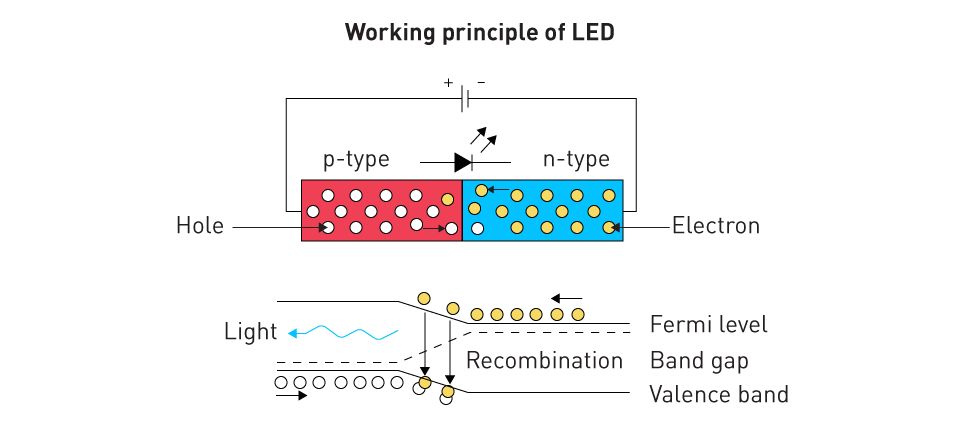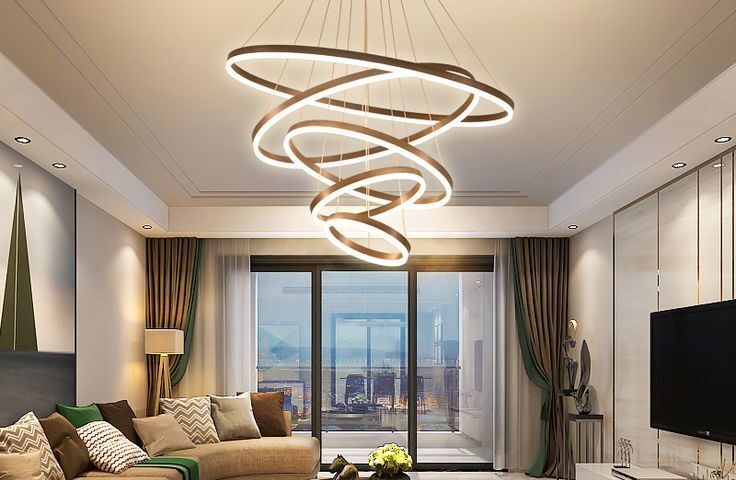In the past few decades, Light Emitting Diodes (LEDs) have seen a huge surge in their application. When a voltage is applied, semiconductor diodes emit light through electroluminescence, which is the operating principle of LEDs.
Construction of an LED
The LED assembly typically comprises the LED chip, which is the silicon p-n junction responsible for light emission, connected via soldering to the Cathode terminal. To collect and concentrate the light in a specific location, the chip is surrounded by a reflective cavity. The anode side of the LED chip is wire-bonded to the Anode terminal of the LED to complete the circuit. Making the lens of the LED as well as protecting the structure from the environment, the internal structure is covered with epoxy or silicon.

Working Principle
LED lights are like a p-n junction diode, with two regions in silicon. The light emitting diode emits light when it is forward biased. When a voltage is applied across the junction to make it forward biased, current flows as in the case of any p-n junction. Holes from the p-type region and electrons from the n-type region enter the junction and recombine like a normal diode to enable the current to flow. As recombination is taking place, the electrons are return to a lower energy state called Valence band, and energy is released in the form of light.

Benefits of LEDs
High Efficiency as compared to conventional lighting solutions. They waste less energy in form of heat or in other words convert electricity more efficiently to light.
Long Life as compared to halogen or HID lights. LEDs can last up to 50,00 hours or more.
Small Size and provide more options in creativity and style.
LED Drivers
P-N Junction requires the current to flow in one direction only. Hence we require DC current. A driver unit is required which AC current to supply DC current. Two types of drivers are available- constant current and constant voltage drivers. Thus drivers are essential components which could be integral or separate unit. Integral Drivers are housed with in the bulb unit. The LED’s output and longevity are directly impacted by the quality of driver.
Dimming Control for LED Drivers
Pulse-Width Modulation (PWM) and Analog Modulation are two popular methods to achieve dimming of light in LED. In PWM, dimming is achieved by flickering the LED on and off at a very fast rate. The brightness of the LED is determined by the duration the LED stays on. In this method the colour remains consistent and is popular method. While in Analog Modulation the current is reduced which results in colour inconsistency. This is less complex method.
Reliability and Lifetime Considerations
As briefly pointed out above, the operating conditions and power management of LED is directly influencing its reliability and longevity.
Temperature Management: The LED’s lifespan can be shortened by the prolonged exposure to high temperatures. To guarantee a longer functional life, efficient heat management is critical. LED unit casing should have provision to dissipate heat to prolong the longevity.
Protection from Over-Voltage and Over-Current Conditions: The role of LED drivers is pivotal in safeguarding LEDs against potential factors contributing to premature failure, such as voltage spikes or excessive current.
The performance and lifespan of LEDs are intricately tied to the efficiency of their power supply and management. Always check the serviceability of driver before changing LED lights.
Signs You Need to Replace Your LED Driver
Some common signs of a faulty LED driver include:
- Flickering
- Buzzing
- Lights becoming brighter or dimmer than usual
- Lighting failures either permanent or temporary
- Lights burning out sooner than life expectancy or warranty



